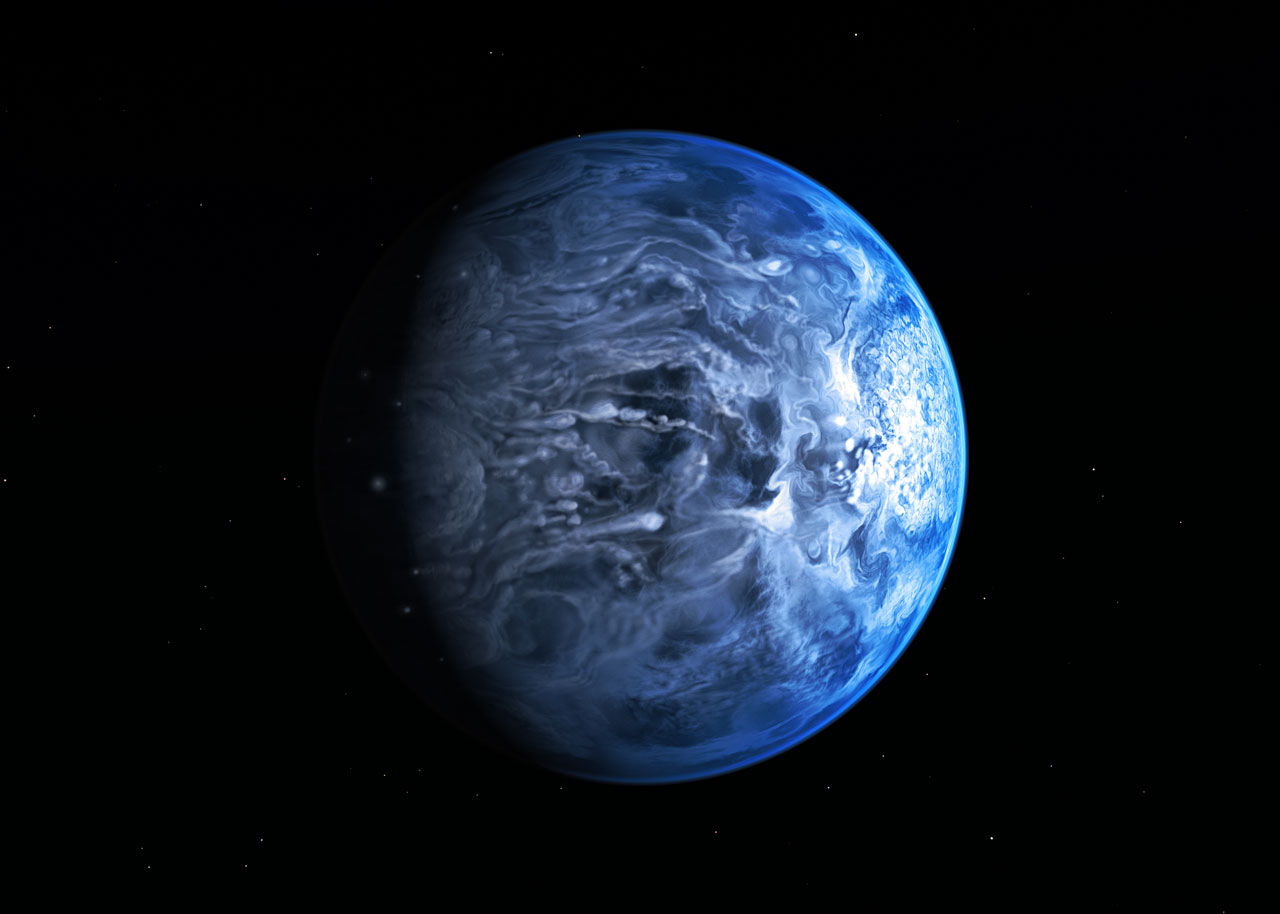Newfound Alien Planet Is Blue!


Color astronomers ecstatic, as they have, for the first time, deciphered the hue of a distant world. The exoplanet, dubbed HD 189733b, is a deep cobalt blue and lies some 63 light-years from Earth (our own blue marble).
While HD 189733b may boast a similar shade as our planet, the orb is not rocky and is instead considered a hot Jupiter, meaning a gaseous planet that orbits very near to its host star, according to SPACE.com. Its weather is no picnic, either. The planet likely experiences glass rain that rushes in sideways in raging winds — some 4,350 mph (7,000 km/h). Its atmosphere, according to NASA scientists, can reach 1,832 degrees Fahrenheit (1,000 degrees Celsius).
NASA scientists used the Hubble Space Telescope to look for wavelengths of light reflecting off the planet's surface to nail down its hue.
Follow LiveScience @livescience, Facebook & Google+.
Get the world’s most fascinating discoveries delivered straight to your inbox.
Jeanna Bryner is managing editor of Scientific American. Previously she was editor in chief of Live Science and, prior to that, an editor at Scholastic's Science World magazine. Bryner has an English degree from Salisbury University, a master's degree in biogeochemistry and environmental sciences from the University of Maryland and a graduate science journalism degree from New York University. She has worked as a biologist in Florida, where she monitored wetlands and did field surveys for endangered species, including the gorgeous Florida Scrub Jay. She also received an ocean sciences journalism fellowship from the Woods Hole Oceanographic Institution. She is a firm believer that science is for everyone and that just about everything can be viewed through the lens of science.


